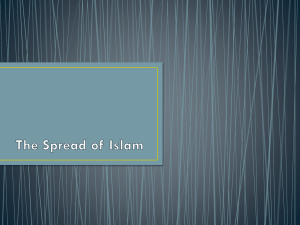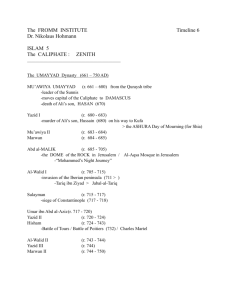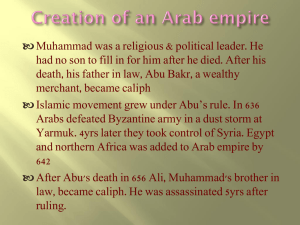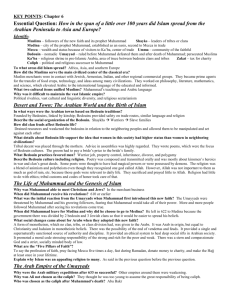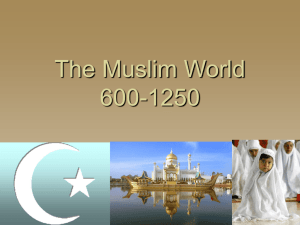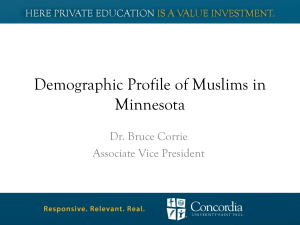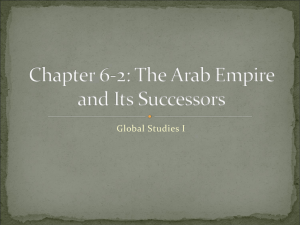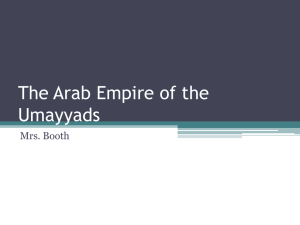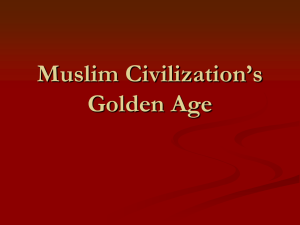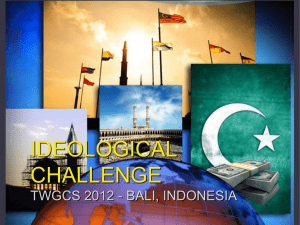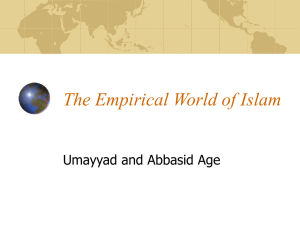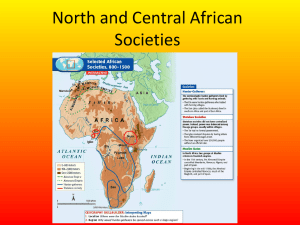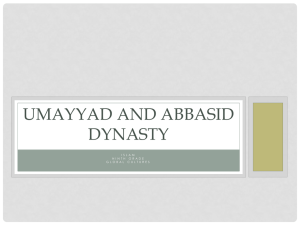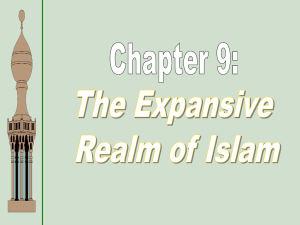Muslim Civilizations 10.2-10.3
advertisement
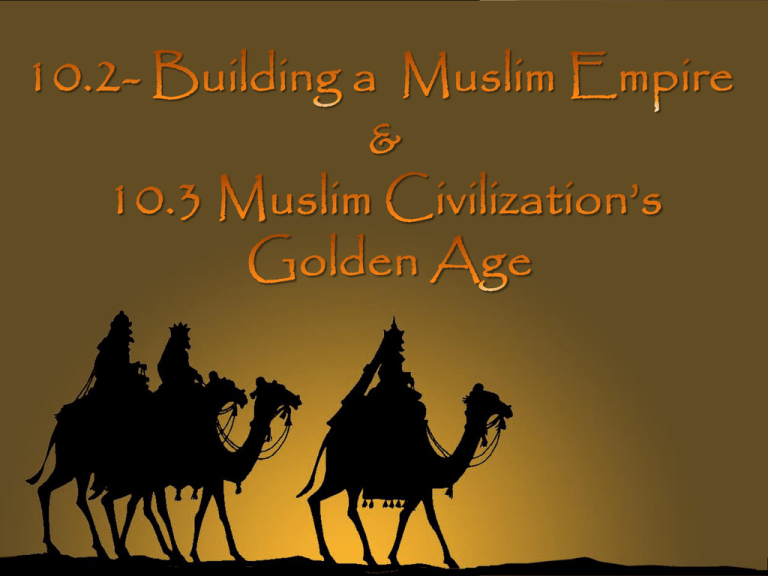
• When Muhammad died, he did not leave a successor, which caused problems for Muslims. • Eventually, the umma agreed that Abu Bakr (Muhammad’s father-in-law) would be the first caliph in 632 A.D. Abu Bakr • Caliph: The Caliph is the head of state in a Caliphate, and the title for the ruler of the Islamic umma. • Many Muslims did not accept Abu Bakr and briefly left the Islamic religion, but Abu Bakr later succeeded in reuniting Muslims. • United, Muslims set out on a series of military campaigns, securing victories against the Byzantines and the Persian empires. • However, a schism between Sunni and Shiite Muslims began to grow wider, splitting the united group. • After Muhammad’s death, Muslims disagreed about who should succeed the prophet in leading the umma. The result was the split between Sunnis and Shiites. • Shiites believed that Muhammad had designated his son-in-law Ali to be his successor. “Followers of Ali”. • Sunni’s believed that the caliph should be a pious member of Muhammad’s tribe, not necessarily one of his relatives. • Shiites believed that the new leader should serve as a religious leader, while Sunni’s argued that a caliph could lead without serving as religious official. • • • • Byzantine Empire Persian Empire Arabian Peninsula Asia Minor • • • • The Red Sea The Bosphorus Strait Arabian Peninsula Mecca and Medina • Sufism is a mystical branch of Islam where followers meditate and fast to connect with God. • Today, 90% of Muslims are Sunni and 10% are Shiites. Very few practice Sufism. • Most Shiites live in Iran, Yemen, Lebanon, and Iraq. • Most Sufis live in the African countries of Senegal and Morocco. • After the death of Ali, a powerful Meccan clan set up the Umayyad caliphate – a dynasty of Sunni Muslims that ruled until 750 A.D. • From their capital in Damascus, Syria, they were responsible for Islam spreading from Spain and Morocco in the West to the Indus River Valley in the east. • Many different peoples were under their rule and non-Muslims were charged a tax. All religions could worship freely. • Arabs had to adapt from living in the desert to ruling vast territories- many ruled like tribal leaders and not kings with large holdings • Tensions began to grow between the haves and have not's- wealthy and poor. The caliphs had a luxurious lifestyle that many saw as obscene. • Even though there was considerable religious tolerance, non-Arabs (even if they converted to Islam) still did not have the same rights as Arabs. • In 750 A.D., Abu-al- Abbas defeated the Umayyad’s, captured Damascus, and founded the Abbasid Dynasty. • The Abbasids treated all Muslims equally, ended conquests, and supported education and learning. • They also governed their empire efficiently, unlike the Umayyad. • Bagdad became the Abbasid Capital. Many mosques with tall slender minarets were erected. • The surviving members of the Umayyad family had fled to Spain after the Abbasid takeover, establishing an independent Muslim state. • In Spain they presided over brilliant, luxurious courts and arts and learning thrived. • Umayyad rule lasted in parts of Spain until 1492. • Beginning in the 900s, the Muslim Empire of the Abbasid showed signs of decline • In 900, Seljuk Turks migrated into the Middle East from Central Asia, adopting Islam and building a large empire Across the Fertile Crescent • The Seljuk Sultan controlled the Abbasid empire and Bagdad by 1055 A.D. • In 1200, Mongols attacked across South West Asia, burning and looting Bagdad in 1258 • Under the Abassids, Muslim Civilization entered a “Golden Age” • Golden Age is a time of great prosperity and cultural accomplishments. • Under the Abassids, the Muslim empire stretched into Asia, the Middle East, Africa, and Europe. • Muslim civilization adopted the traditions of many cultures. • Muslim traders crossed the Sahara, traveled the Silk Road, and sailed to India and Asia. • There was great social mobility- or the ability to move up in society through religious, military, or scholarly achievements • Although slavery was common, Islamic law taught that freeing slaves was a charitable act- so even slaves had a chance to advance • Between 750 and 1350, merchants built a vast trading network across Muslim lands and beyond • Extensive trade and a thriving money economy led Muslims to pioneer new business practices- buying and selling on credit, partnerships, and using checks (sakh Arabic).
